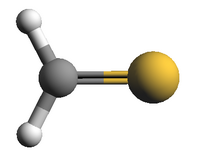|
The data set and the fit are described in detail
in
(1) H. S. P. Müller, A. Maeda, F. Lewen, S. Schlemmer,
I. R. Medvedev, and E. Herbst,
2024, Mol. Phys. 122, Art. No. e2262057.
The fit involves mainly data of the Coriolis coupled states
v4 = 1 and v6 = 1,
which are nearly degenerate, v3 = 1,
which is nearby, and the somewhat more distant
v2 = 1. Extensive rotational data
from the millimeter to the terahertz region were taken
from that work. Also included were ν2
rovibrational data from
(2) D. McNaughton and D. N. Bruget,
1993, J. Mol. Spectrosc. 159, 340;
and ν4, ν6, and ν3
rovibrational data from
(3) J. M. Flaud, W. J. Lafferty, A. Perrin, Y. S. Kim,
H. Beckers, and H. Willner,
2008, J. Quant. Spectrosc. Radiat. Transfer 109, 995.
Furthermore, ground state rotational data were included
as summarized by
(4) H. S. P. Müller, A. Maeda, S. Thorwirth,
F. Lewen, S. Schlemmer, I. R. Medvedev, M. Winnewisser,
F. C. De Lucia, and E. Herbst,
2019, Astron. Astrophys. 621, Art. No. A143.
See the ground state documentation (tag 046509) for details
on these data. The signs of the Coriolis coupling parameters
relative to those of the vibrational dipole moments
have essentially negligible effects on the intensities
in the rotational spectrum. But the signs of the Coriolis
coupling parameters relative to those of the vibrational
transition dipole moments have more pronounced effects on the
intensities in the rovibrational spectrum. It was attempted in (1)
to accomodate available information from (2) and (3).
The vibrational identifiers 0 to 4 represent v = 0,
v4 = 1, v6 = 1,
v3 = 1, and v2 = 1,
respectively.
Frequencies with calculated uncertainties exceeding 30 MHz (or
0.001 cm–1) should be viewed with some caution.
The transition dipole moments were taken from a quantum chemical
calculation by
(5) S. Erfort, M. Tschöpe, and G. Rauhut,
2020, J. Chem. Phys. 152, Art. No. 244104.
The ν4 and ν6 values were
slightly adjusted to accomodate the experimental ratios
of ν4, ν6, and ν3
from (3) somewhat better.
Spin-statistics were applied in the calculations.
The ortho states are described by Ka odd,
the para states by Ka even for
vibrational states with A symmetry (v = 0,
v2 = 1, v3 = 1).
The ortho states are described by Ka
even, the para states by Ka odd for
vibrational states with B symmetry (v4 = 1,
v6 = 1).
The partition function was calculated by summation over all
rotational levels of these five vibrational states.
The value should be insufficient by less than
10–3 at 300 K while more pronounced
deviations occur at 500 K.
|
